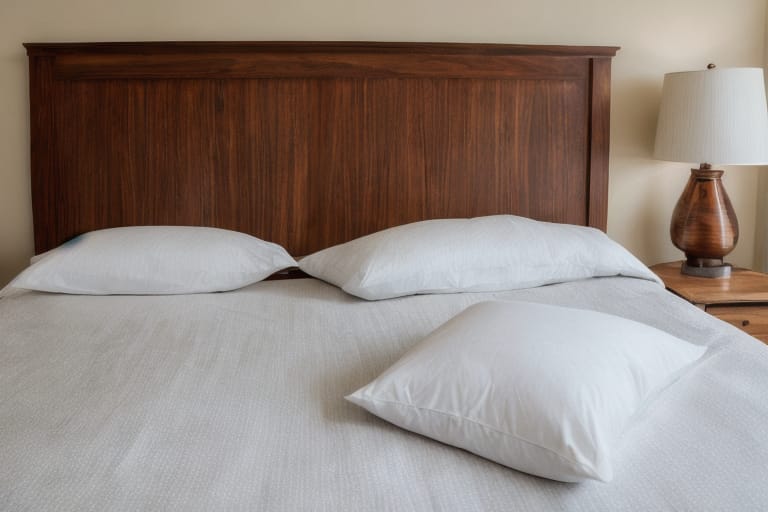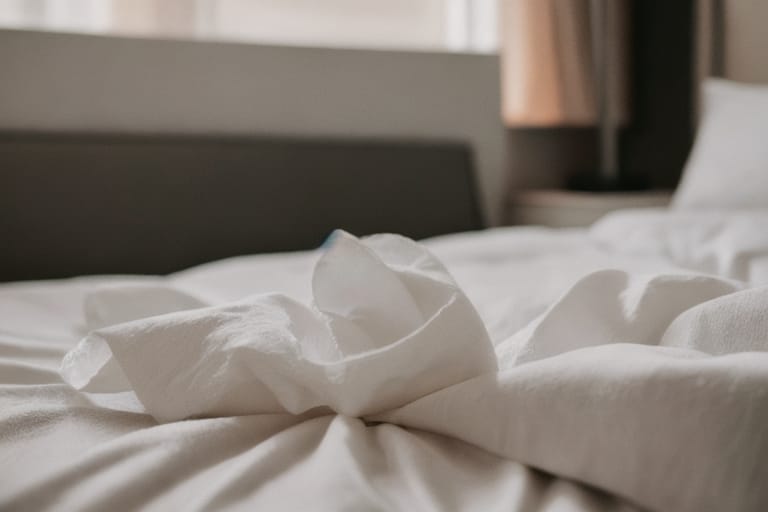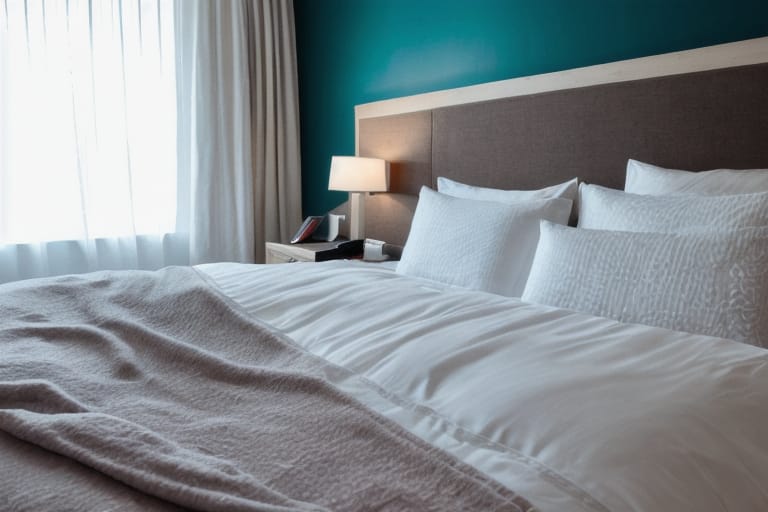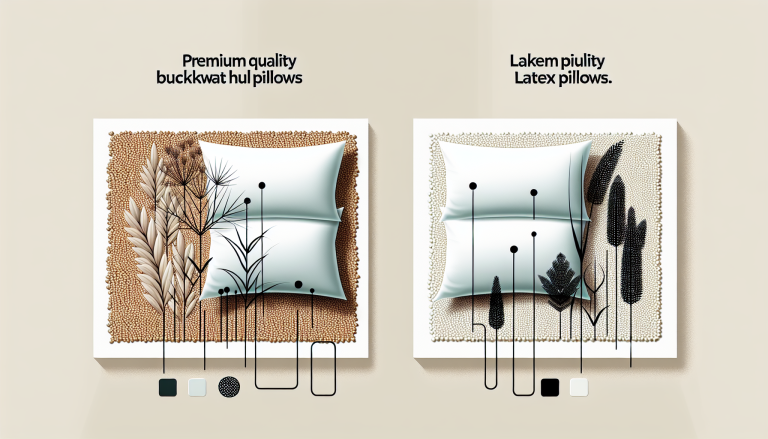You invest in a luxurious, fluffy down comforter to keep you warm and cozy at night. But over time, you notice it starting to look dull, dingy and yellow. What causes this yellowing? And what’s the best way to clean a yellowed down comforter and make it white and fresh again? This beginner’s guide shares everything you need to know.
What Is a Down Comforter?
Before diving into the yellowing issue, let’s review what exactly down comforters are and what makes them so special.
A down comforter is filled with the fine, fluffy under plumage from ducks or geese. This superior down filling provides lightweight, breathable warmth by trapping air. Down offers the highest quality insulation you can find.
Benefits:
- Ultra soft and comfy
- Very warm for the weight
- Breathable and moisture-wicking
- Long-lasting when cared for
Why It’s Important To Keep Down Comforters Clean
Proper care is key to preserving your investment and preventing a dingy, yellowed look.
Down filling is very delicate—the fine filaments and clusters easily trap dirt, oils and sweat over time. And since down lacks the natural water/stain resistance features of feathers, it’s also prone to yellow staining.
Letting soil accumulate not only looks bad, but can degrade loft and warmth. Oils rub off filling onto the shell fabric, resulting in stubborn yellow discoloration.
That’s why it’s so important to clean your down comforter regularly before it has a chance to yellow.
Top Causes of Down Comforter Yellowing
Down comforters can turn an unsightly yellowish hue over time for a variety of reasons:
1. Natural Aging Process
Unfortunately, white down filling naturally loses its bright whiteness eventually. Over many years, exposure to air and light causes the fiber cells in down to slowly oxidize and turn cream/yellow. This effect is accelerated by pollutants in the air.
You’ll first notice the shift from bright white to off-white. Over more years, a deeper yellowish tone sets in.
2. Sunlight Exposure
Ultraviolet rays from the sun have a bleaching effect which fades and yellows fabric over time. Storing or airing out your down comforter in direct sunlight contributes to premature aging and yellowing.
3. Accumulation of Body Oils and Sweat
Your body naturally emits oils and sweat while you sleep. Since down filling is very absorbent, these oils easily transfer from your skin into the down clusters near your head and shoulders. The oils then rub off onto the shell fabric, leaving yellow stains.
4. Using Harsh Cleaners
Bleach and other harsh chemicals degrade delicate down fibers. Optical brighteners leave behind a dingy yellow/gray cast over time. And residue from soap or softeners also attracts soil that causes yellowing.
The best practice is to only use mild liquid detergents without optical whiteners for down.
How Yellowing Impacts Your Down Comforter
Aside from not looking its best, a yellowed down comforter suffers performance issues too:
- Lost loft and warmth from compressed, tangled filling
- Reduced breathability and moisture wicking ability
- Potential musty smell from trapped oils
- Possible allergic reactions to dust mites in dirty down
Luckily, with the right techniques, you can restore a yellowed down comforter and keep it looking like new.
Gentle Washing Methods to Remove Yellowing
Avoid dry cleaning which uses harsh PERC solvents. Instead, focus on gentle home washing methods to lift stains without damaging delicate down filling.
Soaking
For light soiled cases, soaking alone may do the trick:
- Fill bathtub with lukewarm water and a mild down-safe detergent.
- Submerge comforter and gently knead filling to loosen soil.
- Drain dirty water and refill tub. Repeat if needed until water runs clear.
- Rinse twice to remove all soap.
Tip: For tough stains, soak with detergent and white vinegar or baking soda.
Washing Machine Method
For heavily soiled comforters:
- Set machine to a gentle cycle with cold water on delicate setting
- Use a mild down-specific detergent without brighteners
- Add white vinegar or baking soda to wash to boost cleaning
- Rinse with multiple cycles until water runs clear
- Air dry out of direct sunlight
Never use bleach or fabric softener which degrade fibers.
Sunlight as a Natural Whitener
For brighter results, use the sun’s bleaching power after washing:
- Thoroughly air dry down comforter in direct sunlight.
- Turn frequently so all sections get evenly exposed.
- Once fully dried, fluff filling to restore loft before using.
Caution: Avoid overexposure which degrades fabric.
Why You Should Avoid Using Harsh Chemicals
It’s tempting to reach for bleach or other strong cleansers to attack yellow stains. However, these chemicals damage delicate down, deteriorating warmth, softness and loft over time.
Some key problems with using harsh cleaners:
- Bleach degrades keratin protein in down, making it brittle.
- Residues left behind cause lung irritation and allergies
- Most whiteners just mask stains which later reappear
- Brighteners give an optical illusion leaving dingy undertones
Trust that consistent cleaning with gentle products better preserves your investment.
Best Practices For Keeping Down White
Prevention is the best solution for combatting yellowing. Here are pro tips for maintaining a fresh white comforter.
• Wash Every 3-6 Months
Clean comforters 2-4 times a year before soils accumulate. This also sanitizes filling.
• Use Duvet Covers
Protect the shell fabric from body oils and sweat stains. Much easier to launder covers vs the whole comforter.
• Store Properly Off-Season
Prevent dust and moisture exposure by storing freshly cleaned down in breathable cotton cases or mesh bags.

Alternative Solutions for Bad Yellowing
For down comforters that are badly discolored, try these solutions before replacing the whole comforter:
Professional Wet Cleaning Service
A professional CO2 or ultrasonic cleaning service may effectively lift stains using eco-friendly methods. Expect to pay $100+ per king comforter.
DIY Stain Removal
If professionally cleaning isn’t feasible, test these DIY stain removing pastes on hidden sections first:
- Lemon Juice + Salt: Natural acid lifts stains
- Hydrogen Peroxide: Gently bleaches and deodorizes
Apply paste and let sit 1 hour before washing as normal. Check if stains lift.
Preventative Tips To Stop Future Yellowing
Here are some key ways to keep your down comforter white for longer:
Use Duvet Covers
Protects shell fabric from body oils and sweat stains.
Air Out Frequently
Airing out down every few months preserves freshness and avoids musty smells from trapped moisture.
Wash Before Storing
Always store freshly cleaned down comforters over summer to prevent dust mites and oxidation.
Give Space In Storage
Use breathable cotton cases larger than the comforter and avoid compression so air can circulate around filling.
Why Choose Down Over Synthetic Comforters
While down comforters require more delicate care, they offer superior performance and longevity when maintained properly.
Advantages of Down:
- Maximum warmth for weight
- Highly compressible and resilient loft
- Softer, more luxurious feel
- Moisture-wicking, breathable insulation
- Long lifespan exceeding 20 years
Downsides of Synthetic Fiber Filling:
- Traps heat and moisture, sleeps hot
- Breaks down, compacts and clumps over 5-10 years
- Not as fluffy or comfortable as real down
So while down bedding requires a bit more babying, it delivers far superior comfort and durability over other fill options.
Goose Vs. Duck Down: Key Differences
When shopping for down comforters, you’ll notice they specify duck or goose down. What’s the difference in terms of quality, cost and durability?
Goose Down
- Larger clusters, better loft & durability
- Higher warmth-to-weight ratio
- Softer, more luxurious feel
- More expensive
Duck Down
- Smaller clusters, less durable over time
- Lower cost for similar fill power
- Not quite as warm or soft as goose down
- Still higher quality than synthetic fills
So while duck down comforters cost less upfront, goose down delivers better long term performance if cared for properly.
Understanding Fill Power for Down Quality
You’ll also see a number like 600-fill, 800-fill etc when shopping for down. This refers to the fill power, which indicates the quality and insulation ability.
Higher fill power numbers equate to:
- Larger down clusters
- Better loft, warmth and durability
- Softer, more comfortable feel
The highest quality down used in comforters typically ranges from 600 to 900 fill power.
Down Comforter Construction and Composition
A final factor impacting comforter warmth, softness and durability is the shell fabric and construction:
Components:
- Outer fabric shell
- Inner fabric lining to contain fill
- Box baffle construction with stitching to section filling
- Ties or loops to anchor the layers
Fabric Considerations
Higher quality down comforters use tightly woven shell fabrics with higher thread counts (>300). Popular options:
- 100% premium long-staple cotton
- Soft microfiber blends
- Lightweight polyester fabrics
- Luxurious sateen cotton sheets
- Durable damask stripe woven ticking
What To Look For In A Premium Quality Down Comforter
As you shop, watch for these markers of better construction and materials:
• Thread Count Over 300
Smoother, more durable tightly woven cotton.
• Box Baffle Construction
Prevents filling from shifting for even distribution.
• Long Staple Cotton Cover
Smoother and snag resistant.
• High Fill Power (600-900)
Larger, warmer down clusters.
The highest quality down combined with the finest fabrics and construction delivers heavenly comfort that lasts.
Style Tips for Down Comforters
A plush down comforter doesn’t just keep you cozy at night–it also makes an elegant style statement in your bedroom décor.
Flaunt the fluff by letting your comforter billow attractively over the bed, complemented by piles of pillows.
Choose luxe tan, ivory and white shades for a clean, sophisticated bedroom backdrop. Then layer in accent colors with pillows, throws and drapes.
Maximize coziness in winter with extra blankets layered under your down comforter. Remove as needed through the night.
Consider different looks like duvets for warmer months or decorative shams instead of a top sheet.
Environmental Impact: Down vs. Synthetics
For eco-conscious shoppers, here’s how down and down-alternative comforters compare:
Natural Down
- Biodegradable and renewable
- Production has animal welfare concerns in some cases
- Requires energy, water and detergents to clean
Down Alternatives
- Made from non-renewable petroleum sources
- Not biodegradable, fills landfills
- Typically cheaper
- Easy care since they can be machine dried and washed more often
So while synthetic fills seem simpler to maintain, natural down is the more environmentally friendly choice overall when sourced responsibly.
Debunking Common Myths About Washing Down
Despite what you may have heard, you CAN safely wash your down comforter at home.
Common Misconceptions Debunked
MYTH: Machine washing ruins down
FACT: With proper methods, home washing preserves down well if done infrequently
MYTH: You can only dry clean down
FACT: Dry cleaning uses harsh PERC chemicals that damage feathers
MYTH: Air drying takes forever
FACT: With enough airflow, down comforters dry fully in 4-8 hours
MYTH: Down gets lumpy after washing
FACT: Lumps smooth out on their own during drying; fluff filling to restore loft
So rest assured your down can handle the occasional gentle wash!
Conclusion: Caring Properly for Your Investment
A high quality down comforter may cost more upfront, but it truly lasts a lifetime when cared for properly. Focus on consistent light cleaning to avoid permanent yellow staining or other wear issues. With the right preventative storage and handling, your comforter will retain its amazing warmth and billowy comfort year after year.
Now that you know the causes of yellowing, cleaning tricks and preventative care for your investment, you can better preserve its beauty and enjoy heavenly comfort for years of blissful sleep!

Frequently Asked Questions
Still have some lingering questions about maintaining your down comforter? Here are answers to some commonly asked questions:
What’s the best way to clean vomit or blood stains from my down comforter?
For protein-based stains, immediately soak the area in cold water. Avoid hot water which can set the stain. Make a paste with meat tenderizer to help break down proteins. Let sit 30 minutes then rinse and launder normally with down detergent. This should effectively lift stains without harsh chemicals.
How often should I wash my down comforter?
Only launder down comforters 2-4 times per year at most. Frequent washing strips essential oils damaging insulation and durability. Lightly spot clean stains between washes instead. Use a duvet cover to protect the shell.
How do I get rid of musty smells in my down comforter?
Avoid compact storage which traps odors.








